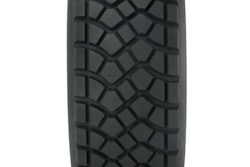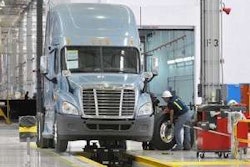The leaders of several national environmental groups on Monday, May 9, asked President Obama to create long-term relief from soaring fuel prices by delivering stronger fuel-efficiency and auto pollution standards for new vehicles currently under consideration. The administration will propose new fuel efficiency and auto pollution standards this September, with key decisions being made this summer. The request came in a letter signed by 34 environmental, science and public health organizations, including the Union of Concerned Scientists, Environment America, Sierra Club and Republicans for Environmental Protection.
“This is the president’s best opportunity to cut America’s oil dependence,” said Kevin Knobloch, Union of Concerned Scientists president. “We have the technology to build cleaner, more fuel-efficient cars, trucks and SUVs. It’s not rocket science – it’s just combining good auto engineering and all-American can-do attitude.”
The leaders of the organizations said today that the best chance the president has to create long-term fuel savings is not to pursue domestic drilling, but rather to demand that new vehicles use the fuel they consume as efficiently as possible. Environment America released a report last week that found that if cars and trucks achieved a 60 mpg standard at today’s current gas prices, the average American family would save $513 at the gas pump this summer.
“We cannot afford the status quo,” said Michael Brune, Sierra Club executive director. “America’s leaders need to act immediately to break our nation’s dangerous dependence on oil – not by drilling more or giving out tax breaks to Big Oil – but through better, more fuel-efficient vehicles, smart transportation choices and real solutions to move us beyond oil.”
According to the groups’ joint letter to President Obama, the strongest standards under consideration would reduce “U.S. oil consumption 2.5 million barrels of oil per day in 2030 – almost 50 percent more oil than we imported last year from the Persian Gulf. The strongest standards also protect our health and environment by preventing two times more global warming pollution than the weakest proposal. That is as much pollution as all of America’s cars and light trucks release in over two years.”
Rob Sisson, president of Republicans for Environmental Protection, said that increasing Corporate Average Fuel Economy standards is the first and most logical step toward reducing the nation’s reliance on foreign oil. “When my fellow Michigander, Gerald Ford, pushed through the first such standards, vehicles in the United States averaged 13 mpg,” Sisson said. “Detroit’s ingenuity has cut fuel consumption by cars in half. American automakers can do better, and American workers can prosper as we export fuel efficiency around the world.”
This September, the administration is set to announce fuel efficiency and global warming pollution standards for new light-duty vehicles sold between 2017 and 2025. The environmental groups say the government’s own analysis determined that a fuel efficiency standard of about 60 mpg and a 6 percent annual reduction in global warming pollution is both feasible and delivers the greatest benefits. This standard, according to a UCS analysis, would save vehicle owners nearly $9,000 over the life of the vehicle at a gas price of $4 per gallon, even after paying for the additional cost of the cleaner, more fuel-efficient vehicle; that’s the equivalent of a gasoline price cut of $1.30 per gallon compared to a vehicle with today’s fuel efficiency.
“Americans shouldn’t have to spend their summers worrying about how they will afford to drive, let alone whether their driving is polluting the air their kids breathe, or whether their beaches will be safe from oil spills,” said Margie Alt, Environment America executive director. “President Obama can help solve these problems by raising pollution and fuel efficiency standards to 60 miles per gallon.”














